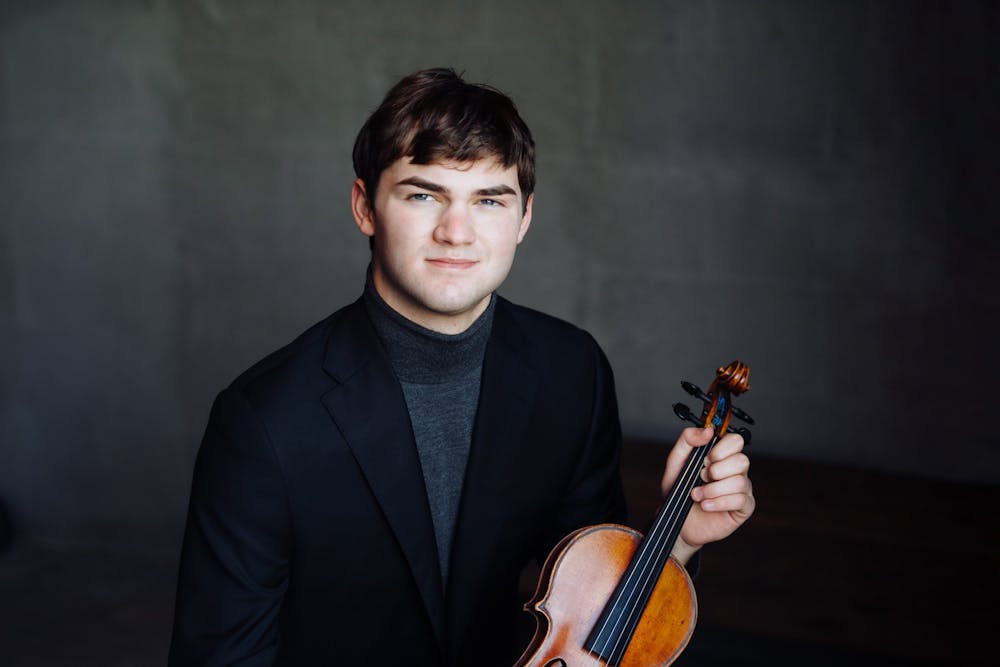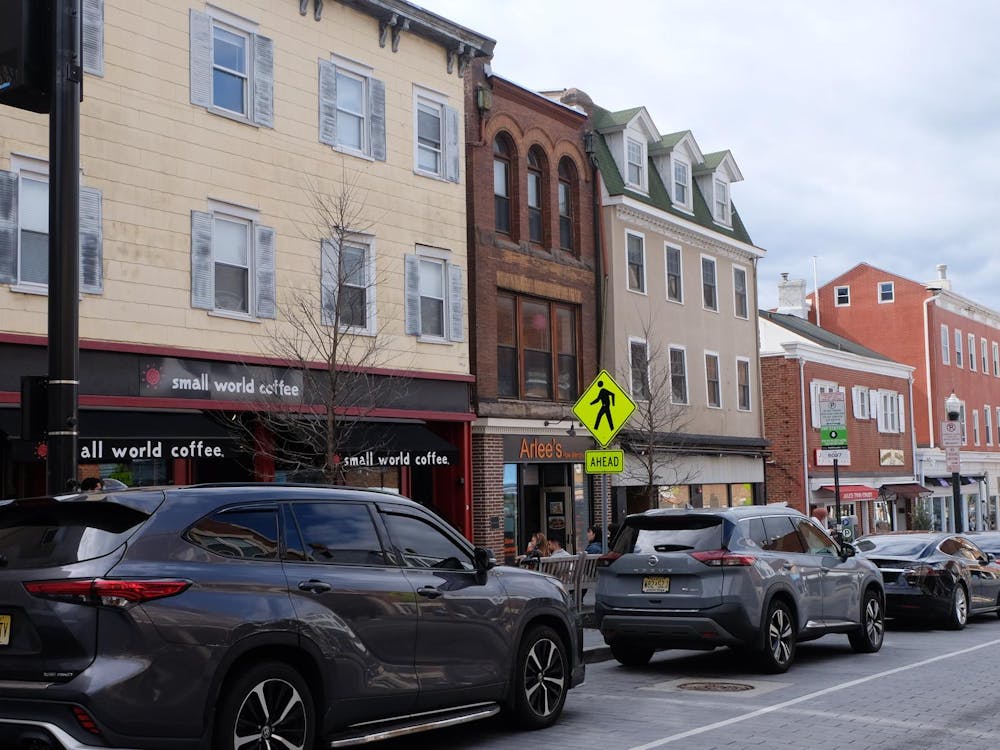The pandemic has fundamentally challenged the classical music world. As recording labels and orchestras begin a painful, gradual process of reopening, they do so in an economic and artistic landscape ravaged by the closing of countless companies in artist management, performance, and more.
All this considered, not everything is fire and brimstone. Like most every other field, the music industry has largely moved online, leading to the meteoric rise of platforms like Dreamstage, which serves as an online concert-streaming venue for performing artists. In its short life as the preferred — or, perhaps, necessitated — venue of choice, Dreamstage has been host to both established icons in music, such as Gil Shaham, Zlatomir Fung, and Jan Vogler, and up-and-coming stars: most recently, violinist Nathan Meltzer and pianist Jun Cho appeared at Dreamstage on Oct. 4, playing a program of Ludwig van Beethoven, Samuel Coleridge-Taylor, Johannes Brahms, and Maurice Ravel.
Perhaps, however, the fundamental changes the pandemic has caused are not the only changes to shake the music world: tumult over the course of this year associated with the ongoing civil rights movement in the United States has had its own effect on the traditionally white-dominated ivory tower of classical music performance. Previously-unappreciated names — William Grant Still, Florence Price, George Walker, and Coleridge-Taylor — now crop up with regularity on concert programs, a change pushed by institutions and performers alike. Meltzer’s performance of Coleridge-Taylor’s Violin Sonata in D minor (Op. 28) proved just how valuable such diverse programming can be.
Indeed, Meltzer more than rose to the unique and formidable technical challenge posed by Coleridge-Taylor’s writing, which changes moods on a dime: from singing and mournful to stormy and virtuosic, this piece does not mince emotions, nor did its performer. Between the few easily-accessible recordings of the piece online and the striking lack of scholarship on Coleridge-Taylor’s works as a whole, performers will almost-inevitably run into issues shaping their own interpretations. However, Meltzer seemed impressively in his element throughout. In the upper register of the violin, his bright colors absolutely soared, bringing a welcome cutting edge to passages like the thunderous ending of the first movement; in intimate, introspective passages like the opening to the second, he brought a warm, sustained tone that felt perfectly unrushed. Finally, in dealing with the third movement, Meltzer bypassed nightmarish challenges in articulation and intonation with flying colors: the piece is not unlike a fiddle tune in some respects, and he played precisely into this mood and energy in a wonderful way. (The contrast between his highly-percussive ricochet technique and the shimmering of his tone on the E string was particularly impressive.)
In a way, the Coleridge-Taylor sonata is Romantic music at its most quintessential. Despite its clear attention to detail, the piece appears unsullied by high-flying compositional aspirations, focusing on the emotional aspect foremost. Listening to this performance made me deeply hopeful that more violinists will play this fantastic piece in the years to come.
Bookending the Coleridge-Taylor in Meltzer’s program were Beethoven’s Violin Sonata No. 8 in G major (Op. 30, No. 3) and Brahms’ Violin Sonata in D minor (Op. 108, No. 3). In these more canonical works, Meltzer’s general style of play became clearer: his opening attacks were sharp and bright, and he paid detailed, intricate attention to the subtle shifts germane to the tempestuous-yet-witty Beethoven in particular.
To be clear, I didn’t find either of these performances as monumental or chillingly virtuosic as the Coleridge-Taylor. In fact, I would have preferred greater risk-taking in some passages of the Beethoven; for example, the last bars of the first movement’s development seemed tame in terms of coloristic and rhythmic contrast, while the waltz section of the second movement may not have lived up to its full musical potential due to a relative lack of forward motion.
However, the performance felt greater than the sum of its parts, due in no small part to the wonderfully complementary teamwork between Meltzer and pianist Cho, who matched both Meltzer’s considerable aplomb and his graceful, light touch as the music called for it. In fact, I felt that Cho could have capitalized more strongly on some of Beethoven's soloistic moments for the piano (of which there are many!). However, their artistic senses served them well, particularly in the Brahms, where Cho had greater opportunities to take a musical lead. The fourth movement, in particular, is so crucially dependent on communication between the pianist and violinist, with its undulating rhythms and abrupt, shocking tempo changes.

Brahms can be one of the most difficult composers to interpret musically: the illusively long, flowing lines of his sonatas in particular belie the strict attention to detail on every note that a compelling performance requires. In the face of this daunting task, Meltzer seemed to be slightly less technically comfortable than he appeared in the Beethoven and the Coleridge-Taylor, but he emerged admirably unfazed from the few technical faults that came his way.
Meltzer closed his program with Ravel’s Tzigane, a popular showpiece of terrifying difficulty. However, his comfortability with the piece was clear. It seemed that he could do it all: his near-perfect intonation throughout some of Ravel’s most technically challenging demands — from octaves, tritones, and thirds to dreaded ascents up the G string — was particularly impressive.
Appropriately, Meltzer approached the melodies of Tzigane in a vastly different way from that which he used in any of the previous pieces, taking pains to capture nuances in phrasing. I found his ability to execute articulation changes on hairpin turns — strongly accentuated vibrato on one note, a prolonged note without for the next — to be some of the most compelling I’d heard.
Admittedly, I had some concerns going into the Tzigane, a piece more commonly recorded for violin and orchestra, about how Ravel’s unique and more-popular orchestration would manifest on the piano. But the particular magic of the ending of the violin cadenza in a more typical performance, with the sensual, surreal ascending and descending chords of the violin echoed in the harp, was not lost in Cho’s subtle piano playing, which captured everything from thrilling legatos to the piercing, panicked accelerando of the finale in a unique way.

The somewhat-unprecedented nature of Meltzer’s and Cho’s performance warrants some words about the strange musical experience of listening on Dreamstage. As audience members, we’re no doubt accustomed to listening in real time to a performance, hearing the music just milliseconds after the performers hear it themselves. When my video lags (by no fault of Dreamstage’s!), I can’t help but ponder whether the performer is already seconds ahead of me, creating an interesting cognitive dissonance in my head.
On a similar note, it’s long since time that we considered the role of the audience in a conventional classical music performance. I’ve been complaining about the incessant coughs between movements for my whole life, but I’d give a lot to be able to hear one — or two, or ten — in a packed concert hall. One of the most sobering musical prospects for me, at least in recent months, has been the fact that I can’t really derive any sort of genuine musical connection with my colleagues, save for what one can get over a computer screen and a spotty Internet connection.
Nevertheless, seeing Meltzer and Cho taking their bows in a silent recording studio gives me some solace in the fact that, very gradually, very carefully, music is coming back.








